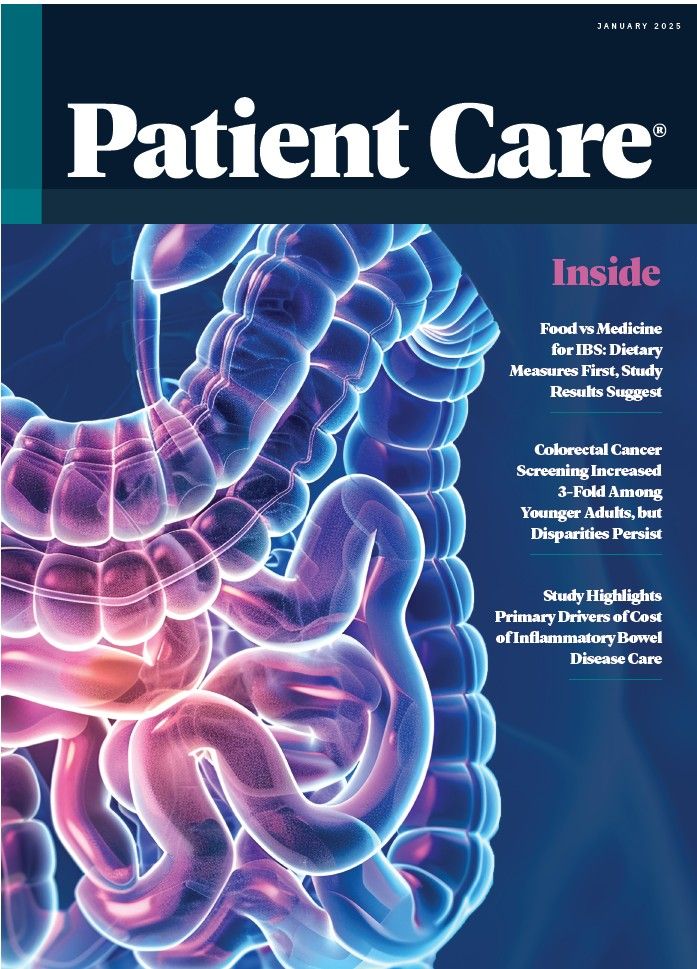- Clinical Technology
- Adult Immunization
- Hepatology
- Pediatric Immunization
- Screening
- Psychiatry
- Allergy
- Women's Health
- Cardiology
- Pediatrics
- Dermatology
- Endocrinology
- Pain Management
- Gastroenterology
- Infectious Disease
- Obesity Medicine
- Rheumatology
- Nephrology
- Neurology
- Pulmonology
US Colorectal Cancer Screening Increased Three-Fold among Adults Aged 45-49 Years, but Disparities Persist
Increases in CRC screening were higher in high socioeconomic status and metropolitan areas, according to a new large cohort study.
©Sebastian Kaulitzky/AdobeStock

Uptake of colorectal cancer (CRC) screening increased nationwide after the 2021 US Preventive Services Task Force (USPSTF) recommendation that encouraged screening in this younger age group, but this rise was uneven based on socioeconomic status and locality, according to new data.
Findings from a nationwide cohort study of more than 10.2 million privately insured individuals aged 45 to 49 years showed that mean screening uptake increased among those at average risk for CRC from 0.50% before the 2021 recommendation to 1.51% after the recommendation (P < .001), “representing an absolute change of 1.01 percentage points, but no significant relative change” researchers wrote in the study published online October 3, 2024, in JAMA Network Open.
In addition, after the USPSTF recommendation was issued, CRC screening uptake increased fastest among average-risk beneficiaries living in areas with the highest socioeconomic status (SES) and metropolitan areas, according to the study results.
In May 2021, the USPSTF issued a grade B recommendation for CRC screening in adults aged 45 to 49 years, which was the first time the USPSTF recommended CRC screening starting at age 45.
“Despite these efforts, screening remains below the national target of 80% among adults aged 45 years or older, with particularly low screening observed among individuals aged 45 to 49 years; those identifying as American Indian or Alaska Native, Asian, or Hispanic; individuals born outside the US; and individuals with income below 100% of the federal poverty level,” first author Sunny Siddique, MPH, a researcher in the Department of Chronic Disease Epidemiology at Yale School of Public Health, and colleagues wrote.
Siddique and coauthors continued: “We conducted one of the first and largest studies to identify possible disparities in screening in this age group as well as recent rates in screening uptake after the recommendation was issued.”
Investigators used deidentified commercial claims data from Blue Cross Blue Shield (BCBS) Axis to identify average-risk individuals aged 45 to 49 years across the US. They included 10 221 114 beneficiaries (mean age, 47 years; 51.04% women) and compared uptake 20 months before (May 2018-December 2019) and 20 months after (May 2021-December 2022); the USPSTF recommendation.
Of the cohort, 25.43% were White, 2.65% were Black, 3.86% were Hispanic, 1.15% were Asian, 0.15% were Native American or Pacific Islander, and 66.76% had unknown race and ethnicity, according to the study.
Findings
As previously stated, between the prerecommendation and postrecommendation periods, mean CRC screening uptake increased from 0.50% to 1.51% (P < .001) among average-risk beneficiaries. Although these individuals had a higher absolute change in screening compared to high-risk beneficiaries (1.01 percentage points [95% CI 0.62-1.40] vs 0.21 [95% CI 0.02-0.40]), average-risk persons had no significant relative change in screening (202.51%; 95% CI −30.59% to 436.87%).
Investigators also observed that compared with average-risk beneficiaries living in areas with the lowest SES, those residing in places with the highest SES had the largest absolute change in CRC screening (1.25 percentage points [95% CI 0.77-1.74] vs 0.75 [95% CI 0.47-1.02]). However, relative changes were not significant (214.01% [95% CI, –30.91 to 461.15] vs 167.73% [95% CI, –16.3 to 352.63]).
Screening uptake increased the fastest after the USPSTF recommendation among those living in areas with the highest SES (0.24 percentage points every 2 months, 95% CI 0.23-0.25), as well as among those in metropolitan areas (0.2 percentage points every 2 months, 95% CI 0.19-0.21).
In addition, 11.5% of average-risk beneficiaries aged 45 to 49 years received CRC screening in the postrecommendation period, which suggests that “targeted initiatives to improve screening in this age group are warranted to reach the national goal of screening 80% of the population in every community,” researchers wrote.
In the subgroup analysis of average-risk beneficiaries with data on race and ethnicity, results showed significant increases in screening between the 2 periods in each group.
A main limitation of the study was that it only included BCBS beneficiaries, Siddique and colleagues noted. Although BCBS is the largest provider of commercial health insurance, the cohort may not be fully representative of the general US population because those beneficiaries are usually younger and more socioeconomically advantaged with employer-based insurance. Also, data on race and ethnicity were only available for a subset of the population, “undermining our ability to thoroughly evaluate the potential influence of these demographic factors,” Siddique et al stated. Future studies should continue to examine changes in CRC screening patterns among diverse population subgroups, investigators added.
Reference: Siddique S, Wang R, Yasin F, et al. USPSTF colorectal cancer screening recommendation and uptake for individuals aged 45 to 49 years. JAMA Netw Open. Published online October 3, 2024. doi:10.1001/jamanetworkopen.2024.36358

